Hawaiian Airlines just agreed to merge with Alaskan. Here's what it's like to fly on Hawaii's namesake airline.
Alaska Airlines is buying rival carrier Hawaiian Airlines in a deal worth $1.9 billion.
The carriers would be under one system and loyalty program, but Hawaiian would keep its branding.
I recently flew Hawaiian for 10 hours from NYC to Oahu — here's what the long-haul economy product is like.
During my eight years of working in the airline industry, I've managed to fly on every US carrier except one: Hawaiian Airlines.
So, for my honeymoon trip to Oahu in November, I ignored my loyalty to Delta Air Lines and booked Hawaii's namesake carrier. The Hawaiian reservation for two people in economy cost us about $1,800 roundtrip, which was cheaper than Delta's fare.
My husband, an airline pilot himself, was just as excited as me to experience Hawaiian. Considering the carrier is consistently praised for its comfort and reliability, we had high hopes going in.
While the seats themselves were nothing special and had one slight annoyance, the tasty food and overall seat comfort made up for it.
And my flight was before the announced deal with Alaska Airlines, so I got to experience the carrier before any potential merger.
Alaska's $1.9 billion plan to buy rival Hawaiian is expected to greatly expand its footprint on the West Coast and across the Pacific.
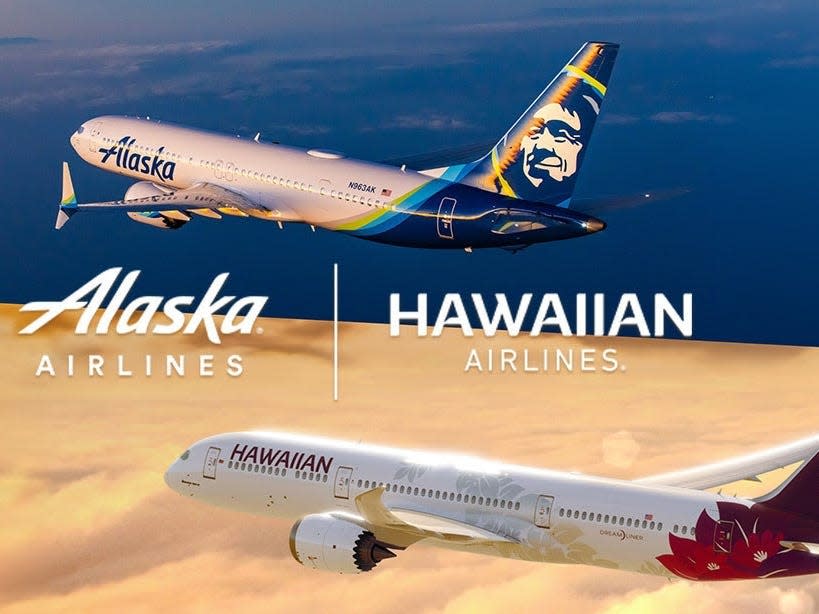
Together, Alaska and Hawaiian would serve a total of 138 destinations, including 29 international cities like Tokyo and Seoul.
The joined entity would also become part of the Oneworld alliance — which Alaska is already a part of with American — stretching the group's combined network to 1,200 cities globally.
The deal may face regulatory action as the combined carrier could be deemed anti-competitive.
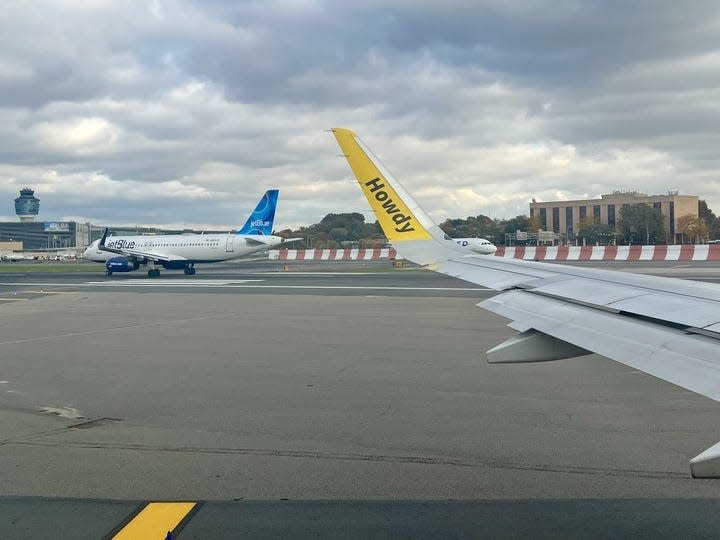
JetBlue Airways wants to buy Spirit Airlines for $3.8 billion, but the US Department of Justice argues the merger violates anti-trust law.
The agency already squashed JetBlue and American Airlines' controversial Northeast Alliance in July over anti-competitiveness.
Alaska will still allow Hawaiian to keep its iconic logo and livery — and I also hope it can keep its comfy seats and tasty food.
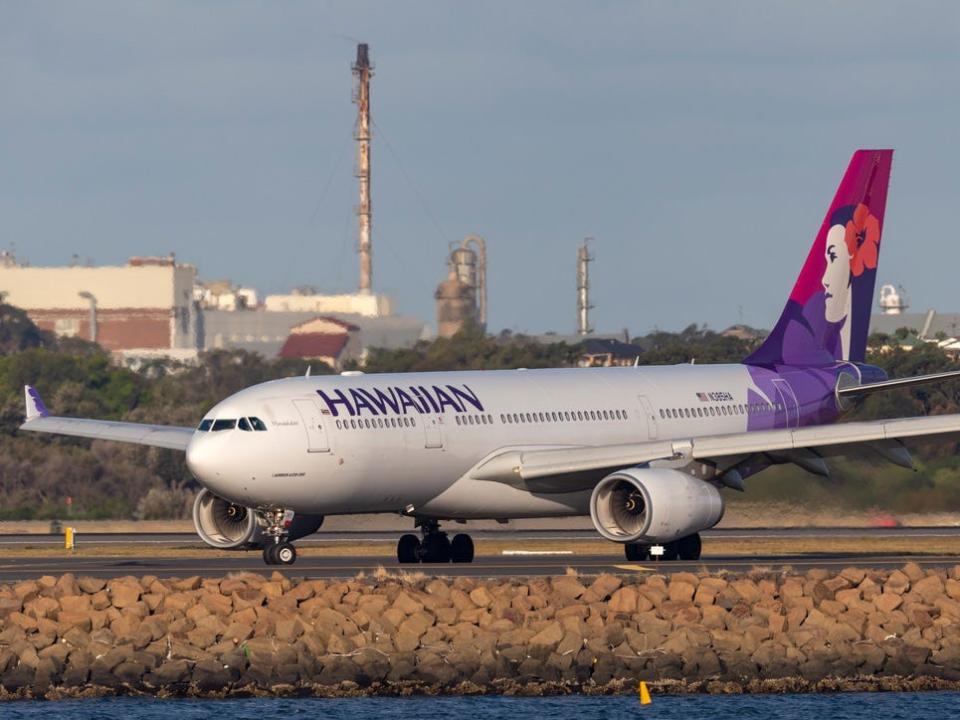
The decision to keep both brands was made out of respect for each airline's long history and deep cultural ties to their respective communities in the 49th and 50th states, according to Alaska.
For our Hawaiian flight, my husband and I arrived at JFK's Terminal 4 at 8 a.m. for a 10 a.m. scheduled departure.

I normally wouldn't show up to the airport so early for a domestic flight, but I wanted extra time to check our luggage and grab breakfast from one of the airport lounges.
With several bags in tow, we headed to Hawaiian's check-in counter and were happy to be one of the few people in line.

We checked two bags, both of which were well below the 50-pound limit at about 30 pounds each. This gave us plenty of wiggle room to bring back souvenirs.
Granted, we had to wait 30 minutes in Honolulu and an hour in New York on the return leg to collect our bags, so be sure to budget that time.
We breezed through security thanks to TSA PreCheck and spent about an hour at the Virgin Atlantic lounge.

Access to the lounge came with our Priority Pass membership, and it's the best one available in Terminal 4, in my opinion.
We boarded the aircraft about 45 minutes before departure and made our way to a pair of seats in the back of the plane.
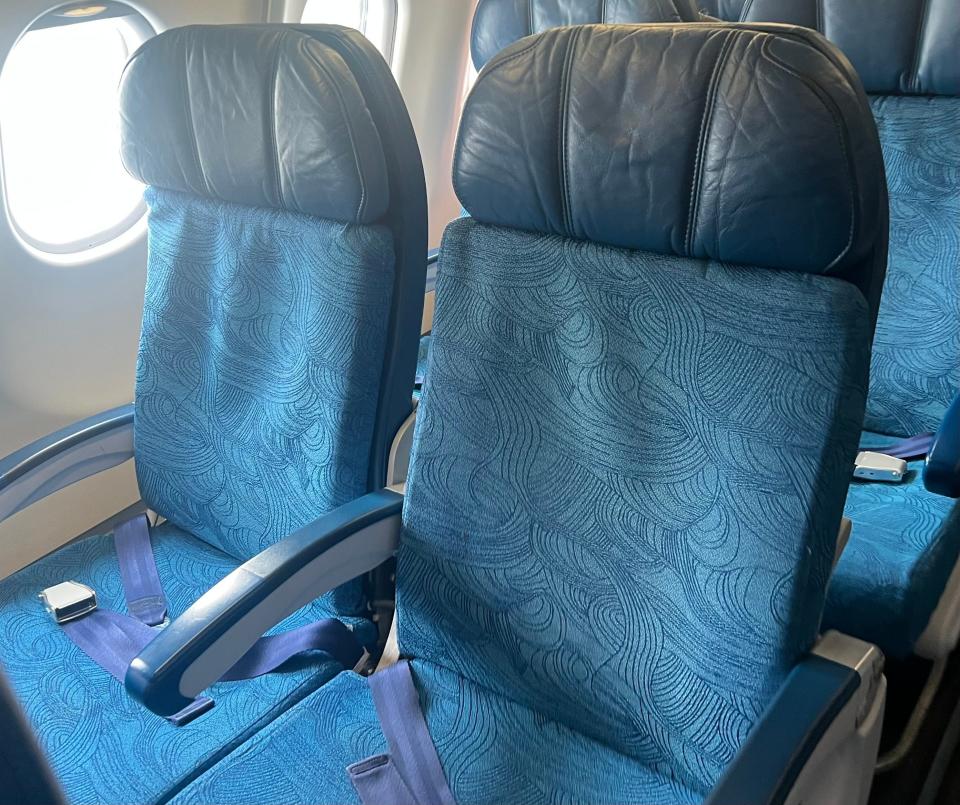
Hawaiian uses the widebody Airbus A330 on its long-haul routes between Honolulu and the East Coast, and it features dual seats on each side — perfect for couples.
Walking through the cabin, I appreciated the light-blue color scheme and the fun flight-attendant uniforms.
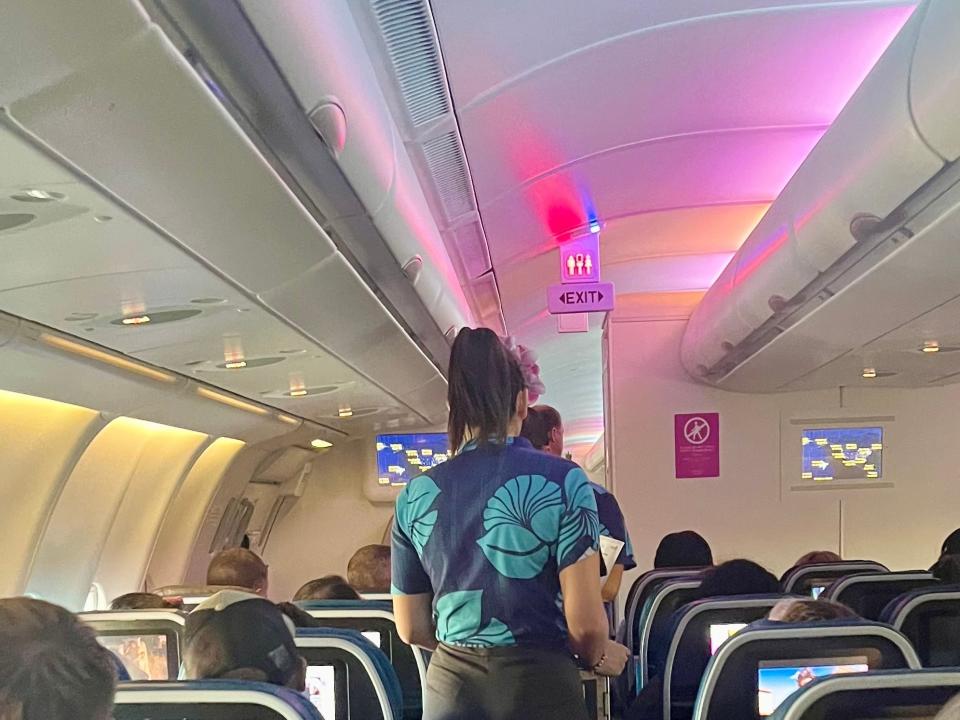
Hawaiian is a leisure-focused carrier, and I liked its laid-back ambiance. The landmarks and culture of Hawaii even inspired the in-flight safety video.
But the plane did lack WiFi.
We soon made it to seats 42J and 42H. I chose this particular section because of the bigger aisle in the back of the plane.
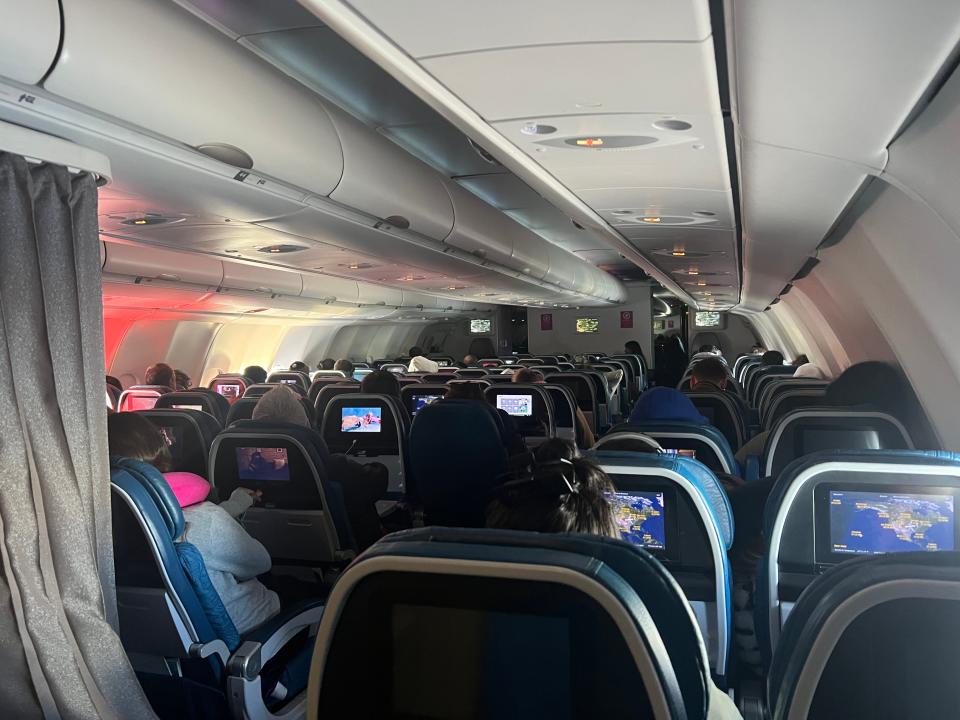
Even though it would mean deplaning last, I wanted to sit in the back where I knew there would be more space and privacy.
Rather than the 2×4×2 configuration installed throughout most of the economy cabin, rows 43-47 are in a 2×3×2 layout.

This type of configuration is common on other airline A330s as well.
To avoid the rows closest to the galley and lavatory, I wanted rows 43 or 44. But neither had both seats open when I was booking the flight, so I settled for row 42.
With one seat gone, the wider aisle made the aft cabin feel more open — as much as it could in a flying metal tube.
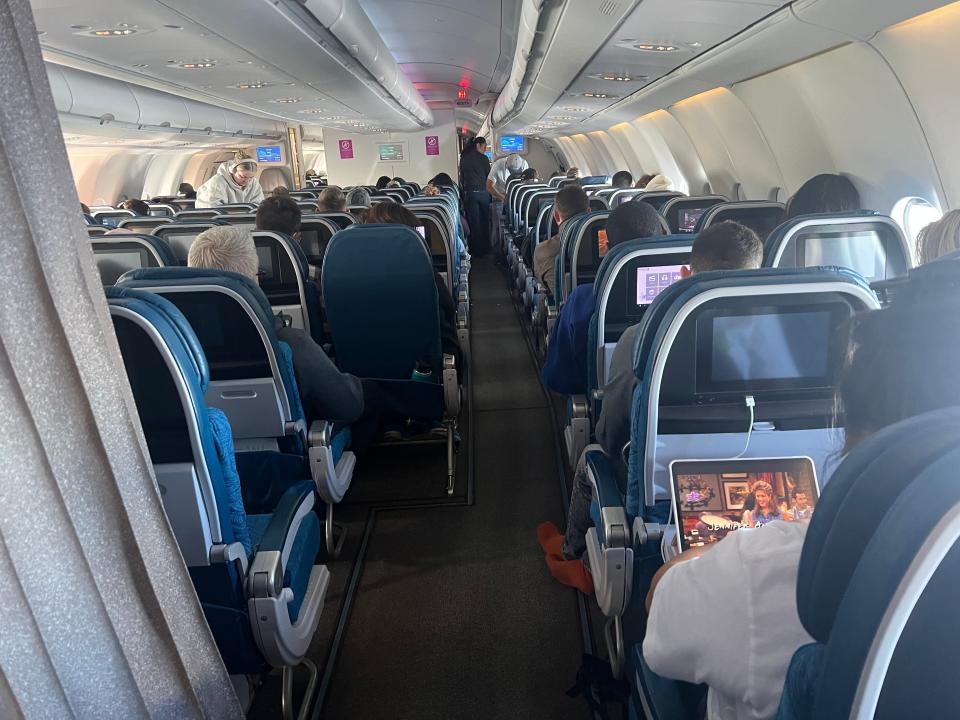
While we were one row ahead of the wider aisle in row 42, we still had easy access to a space to stretch our legs and walk around.
Other than the change in layout, there was nothing particularly outstanding about the seats.

The seats came with adjustable headrests, a seatback pocket, and an in-flight entertainment system with a USB port.
There wasn't an under-seat power outlet in regular economy.
As expected, the seatback pocket was just one pouch, and there were no special amenities. Still, the seats were perfectly comfortable.
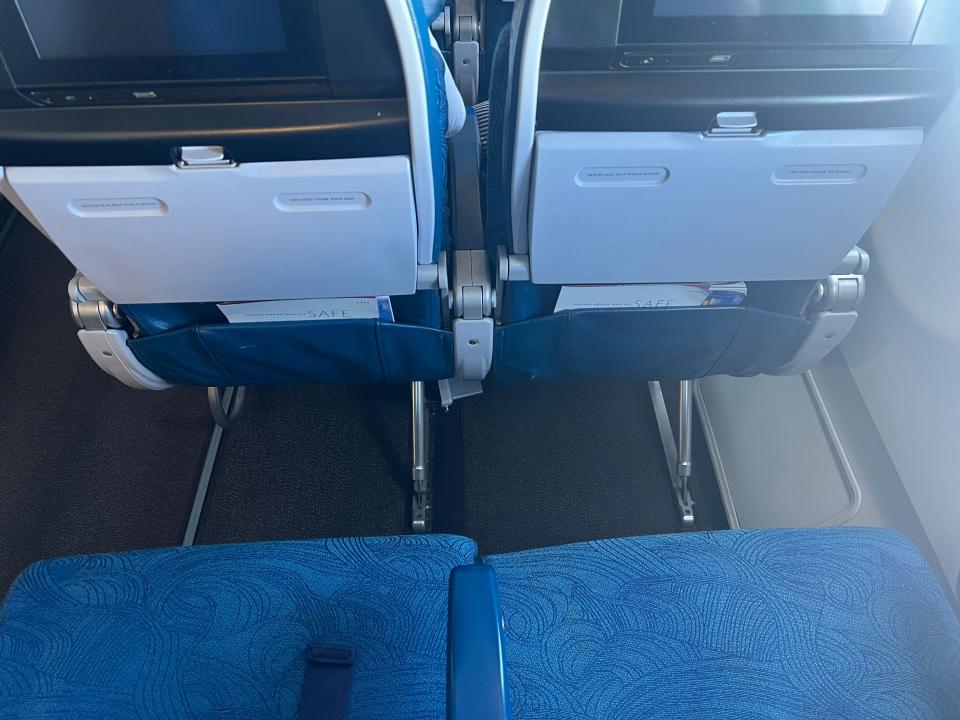
I wish the seat incorporated a cupholder like on Singapore Airlines or a footrest as featured on All Nippon Airways.
But Hawaiian's product was easily comparable to non-five-star Asian carriers, including Delta, American Airlines, and United Airlines.
I was particularly happy with the padding and the legroom, the latter being pretty industry-standard.
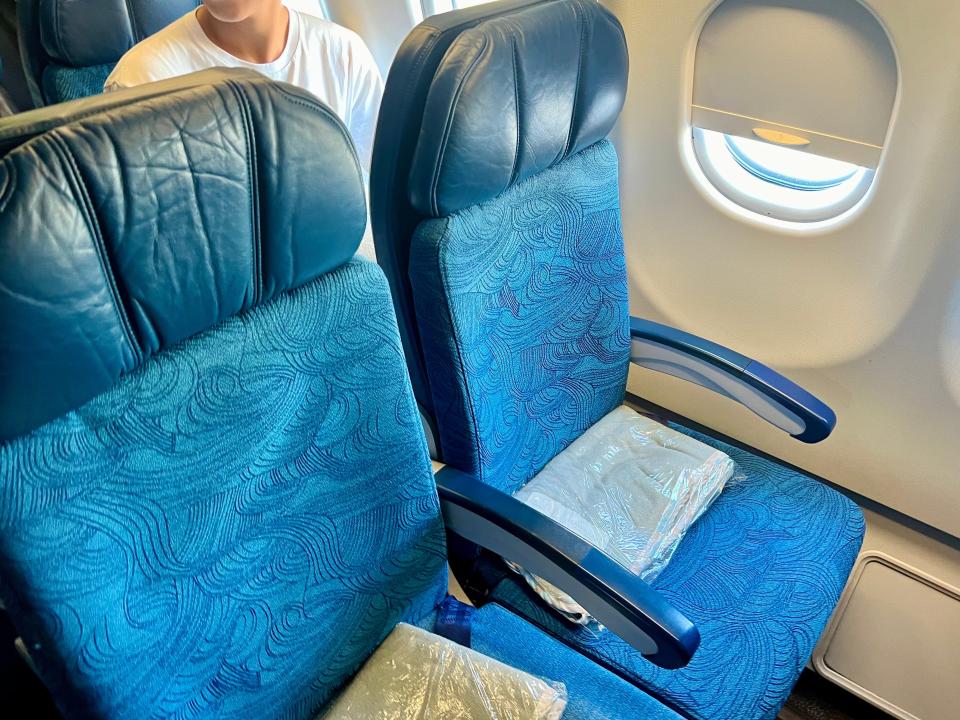
According to Hawaiian, its A330s offers 31 inches of pitch, which is similar to other airlines like Delta and KLM.
Delta, which is the only direct competitor on the route between New York-JFK and Honolulu, offers 31-32 inches of pitch in economy on its widebody planes, per SeatGuru.
My husband and I are only 5'3" and 5'7", respectively, so we felt we both had enough legroom.
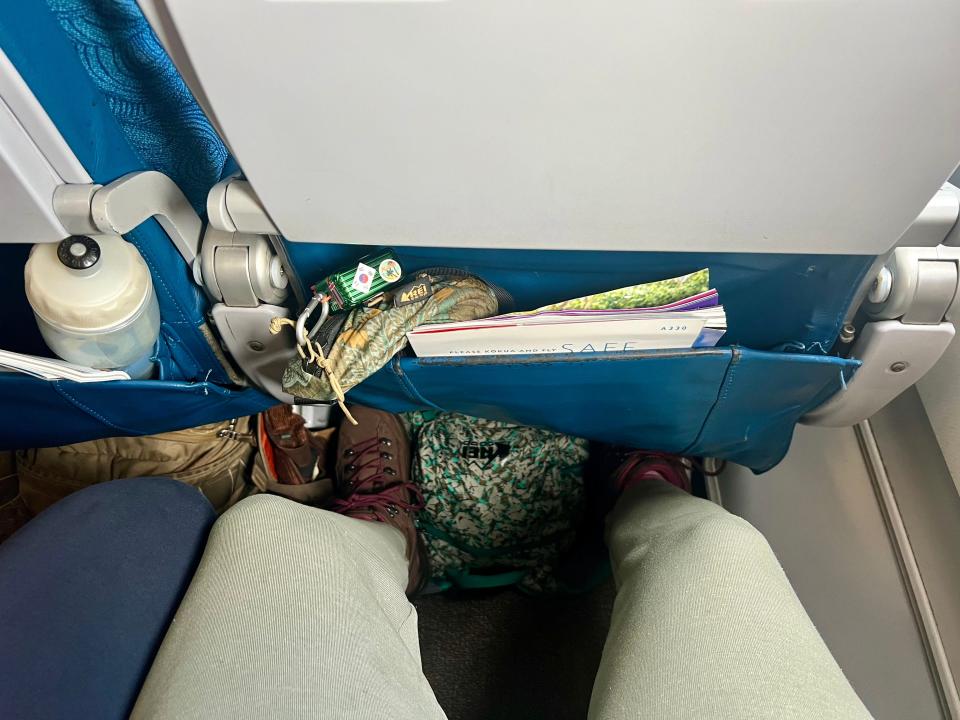
Considering the flight is so long, taller passengers may consider an upgrade to "extra comfort" seats with 36 inches of pitch.
There were also plenty of movie titles to choose from to pass the time.
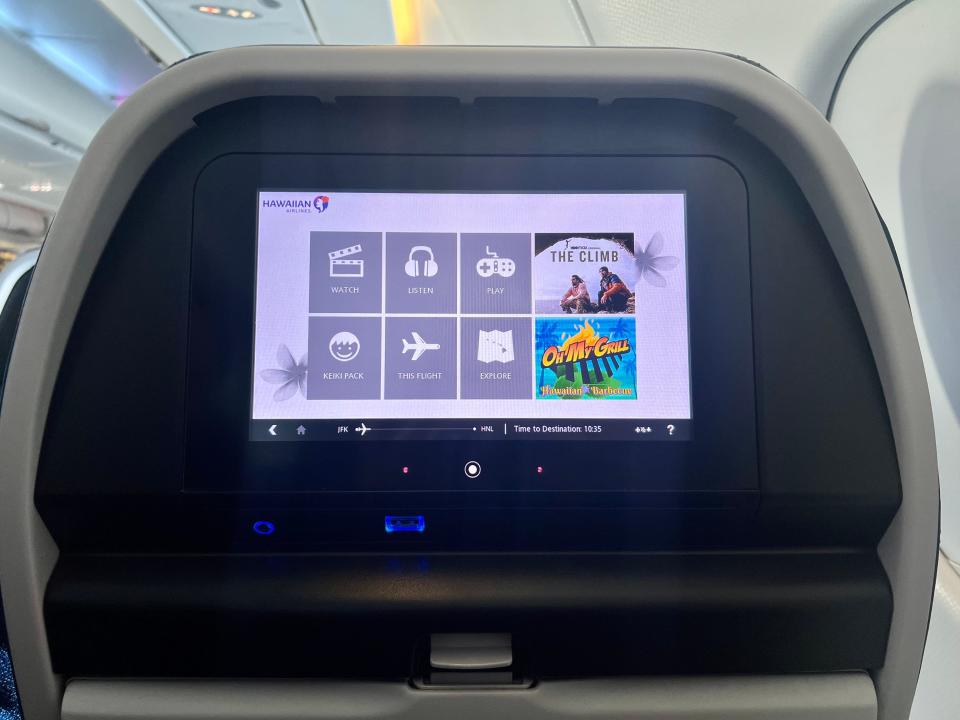
I particularly enjoyed the murder mystery film "See How They Run" while my husband watched titles such as "Asteroid City."
But I had one major quip with the seatback screen — it didn't flip up.
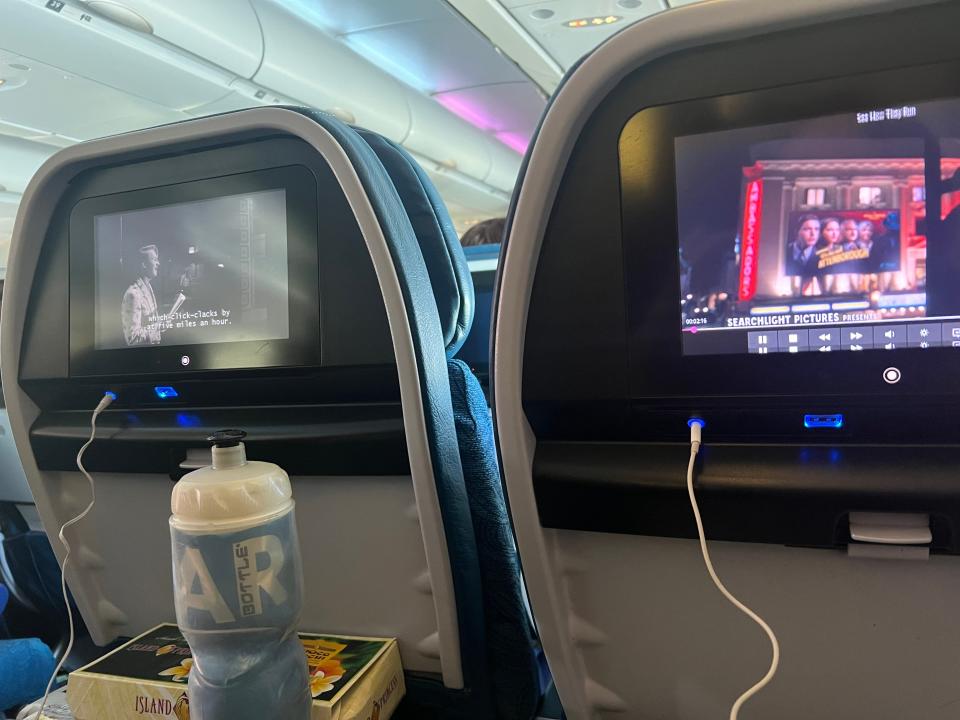
This was my only big complaint of the experience.
This meant the angle of the TV was awkward when the person in front was fully reclined.
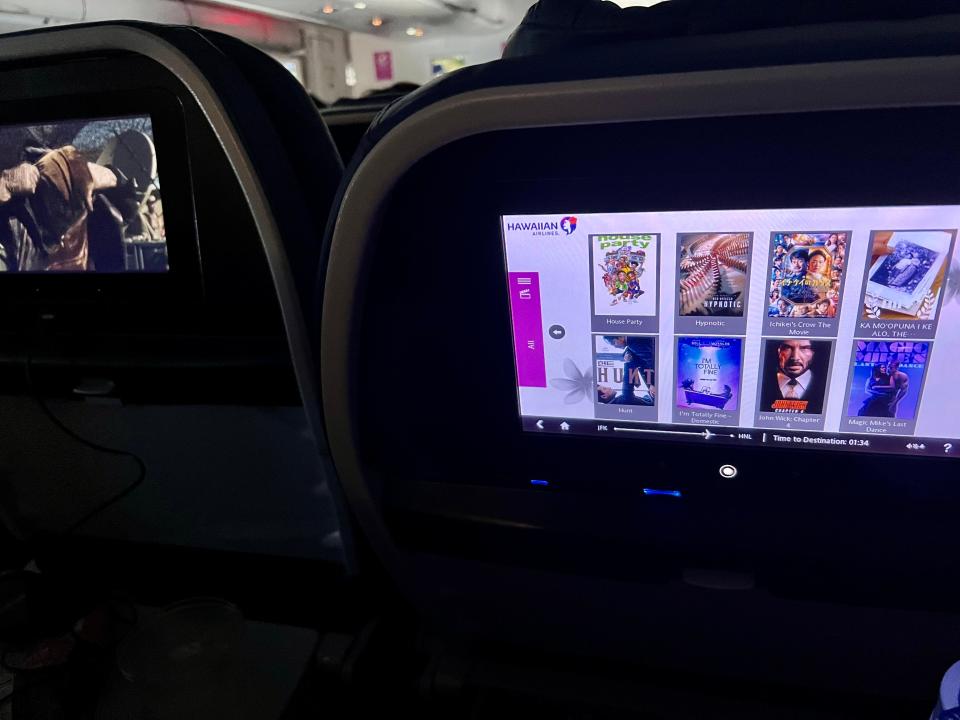
Basically, I wasn't able to see my screen straight on during half of the flight. And the reclined seat infringed on my space if I didn't recline as well.
It was an annoyance, but honestly, the deep recline helped me sleep and ended up being a fine trade-off.
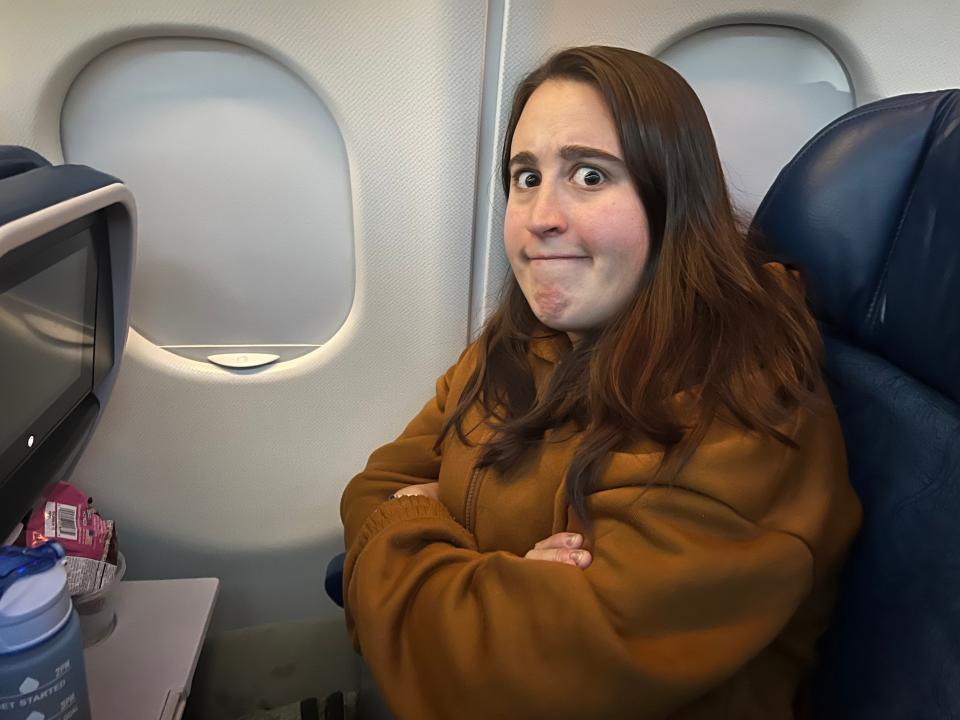
I also noticed the recline made some of my tray table space essentially unusable. Fortunately, the flight attendants asked passengers to set their seats upright during the meal service.
Shortly after settling into our seats, we pushed back from the gate and took off about 20 minutes later.
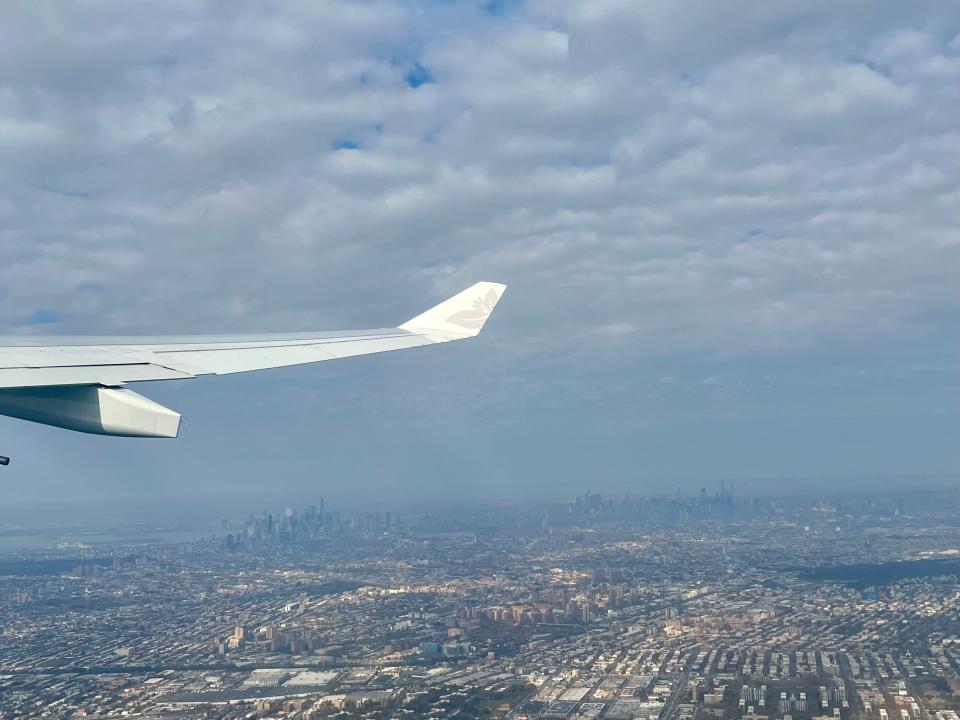
I was happy Hawaiian followed through on its reputation for good on-time performance.
The flight attendant soon came by with a cart full of things such as headphones, drinks, and snacks for purchase.
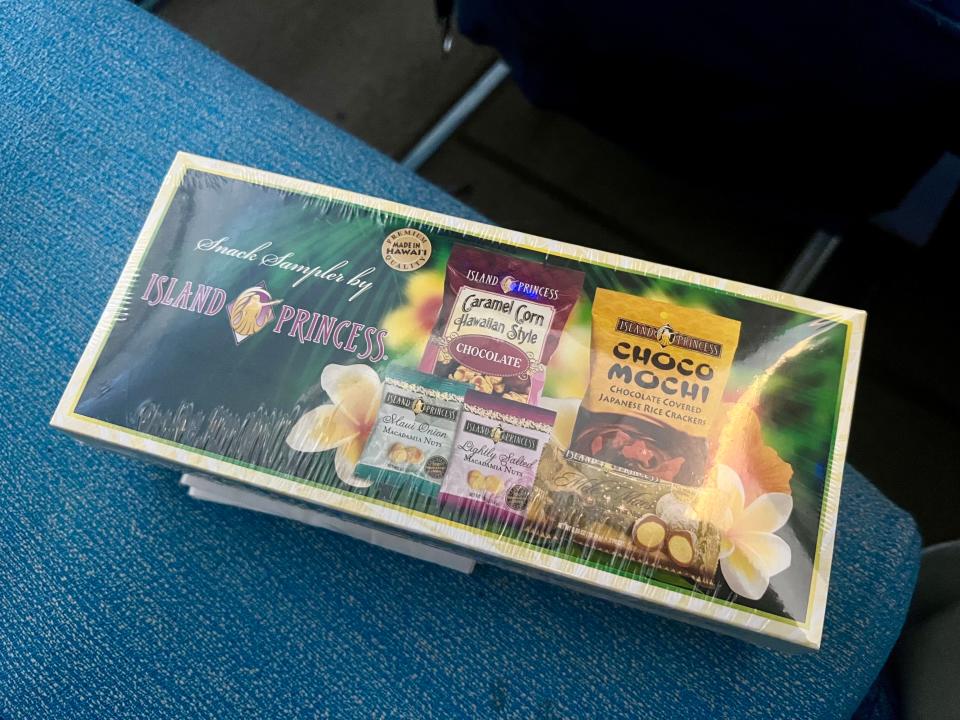
There was a price listed for the earbuds, but the flight attendants handed them out for free.
Unsure how big the complimentary meals would be, I decided to buy a snack box.

I ordered an assorted box for $12 with themed snacks, such as Maui Onion macadamia nuts and Hawaiian-style caramel corn.
I loved everything included, and it helped keep my hunger at bay.
We also enjoyed a few local Maui beers.

It was our honeymoon, after all.
About two hours into the flight, we were served our first of two meals — and this is where Hawaiian shined over its US competitors.
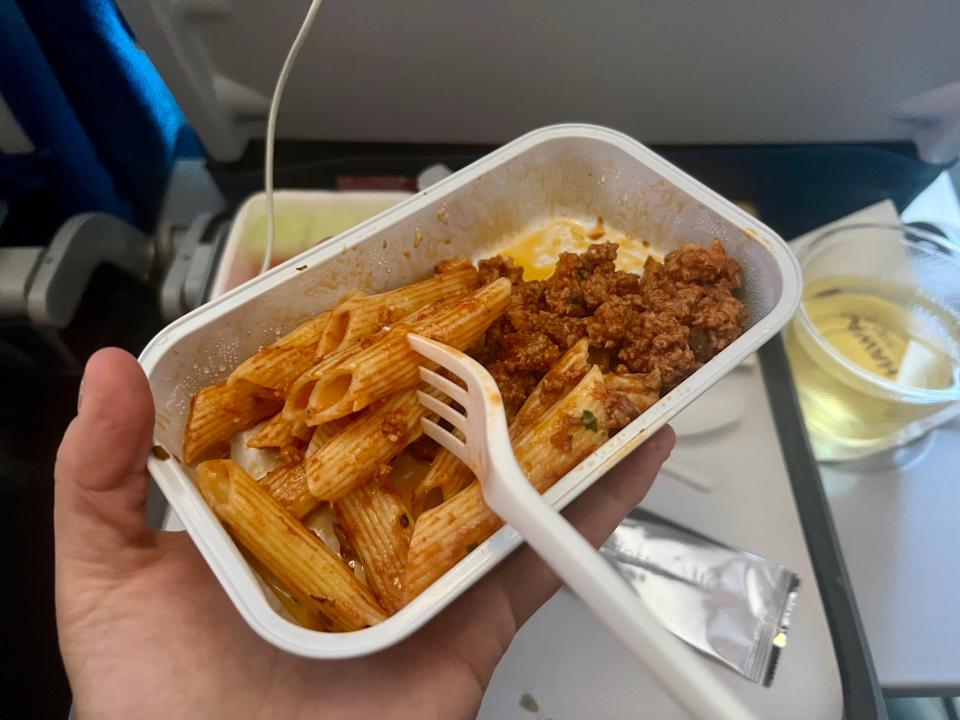
I loved the food on Hawaiian, easily beating out Delta and United.
The first offering was a pasta dish, and despite looking a little dry, it was surprisingly tasty.
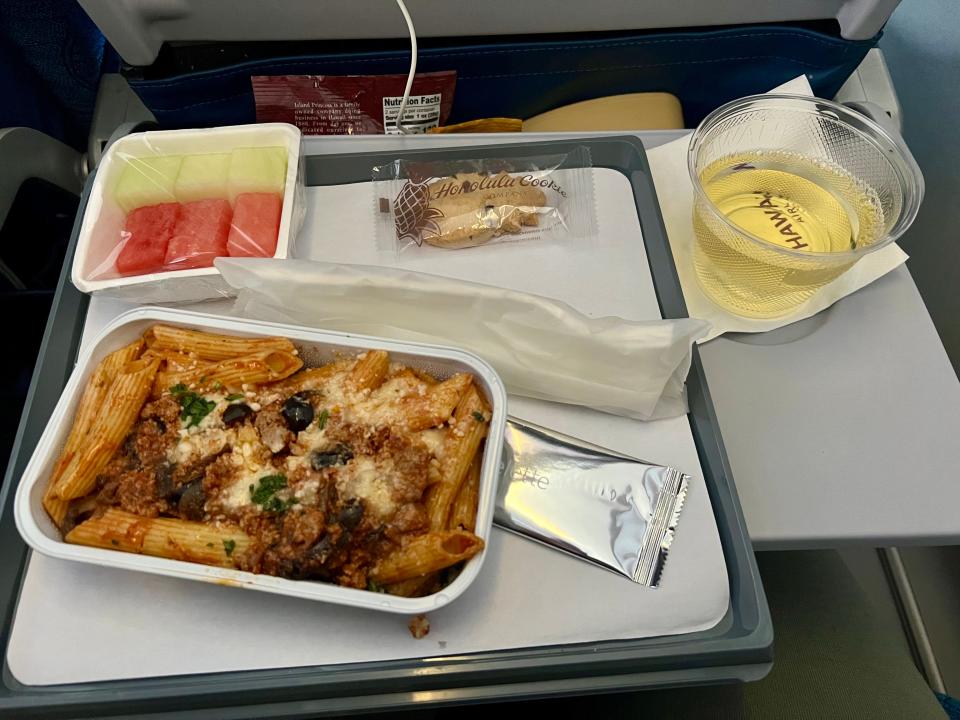
The meal came with melon and a cookie, as well as a complimentary cup of wine. I'm not a huge wine drinker, but my husband enjoyed it.
The second meal, consisting of an egg sandwich, juice, and trail mix, was served about 90 minutes before landing.
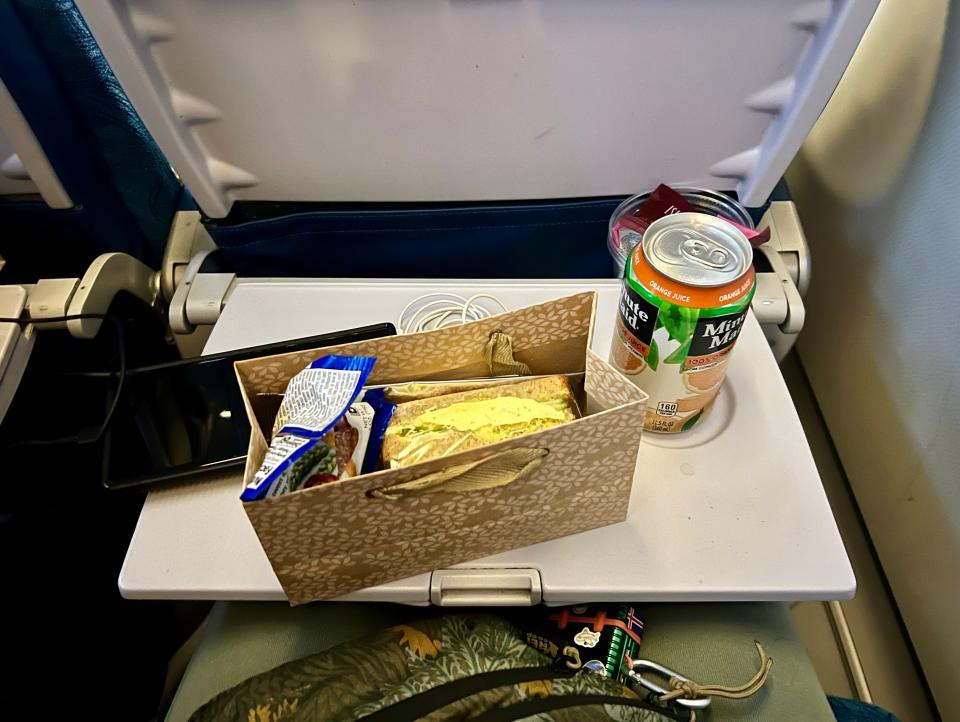
I loved the little bag it was served in, which was quite on brand with the Hawaiian-inspired leisure theme.
I thought Hawaiian's egg salad was particularly excellent.

I typically don't have the appetite for a second airline meal after traveling for hours on end. My stomach is just weird.
But I loved the egg sandwich because it was simple and filling enough for an afternoon arrival in Honolulu.
On the ride back to New York two weeks later, we were met with the same standard-economy seats and more good food.
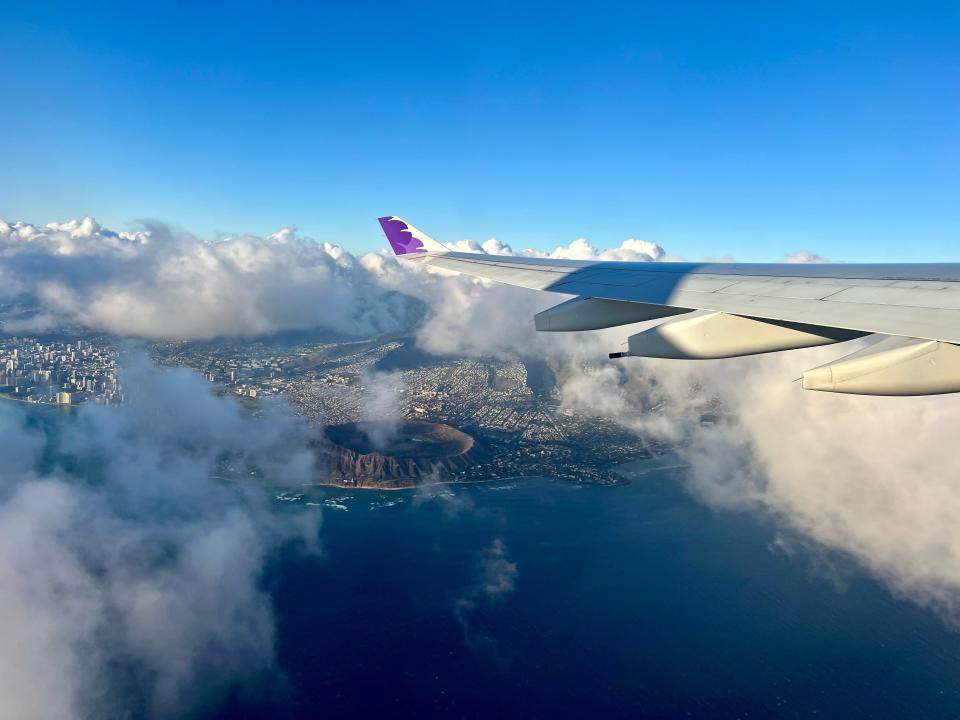
The return flight was another 10 hours nonstop. But this time, it was a red-eye, and Hawaiian provided a blanket.
For my seats, the aft pairs were taken, so we sat further up in row 38.
The first meal was meatballs, rice, and veggies. Similar to the outbound meal, it was served with fruit and a pastry.
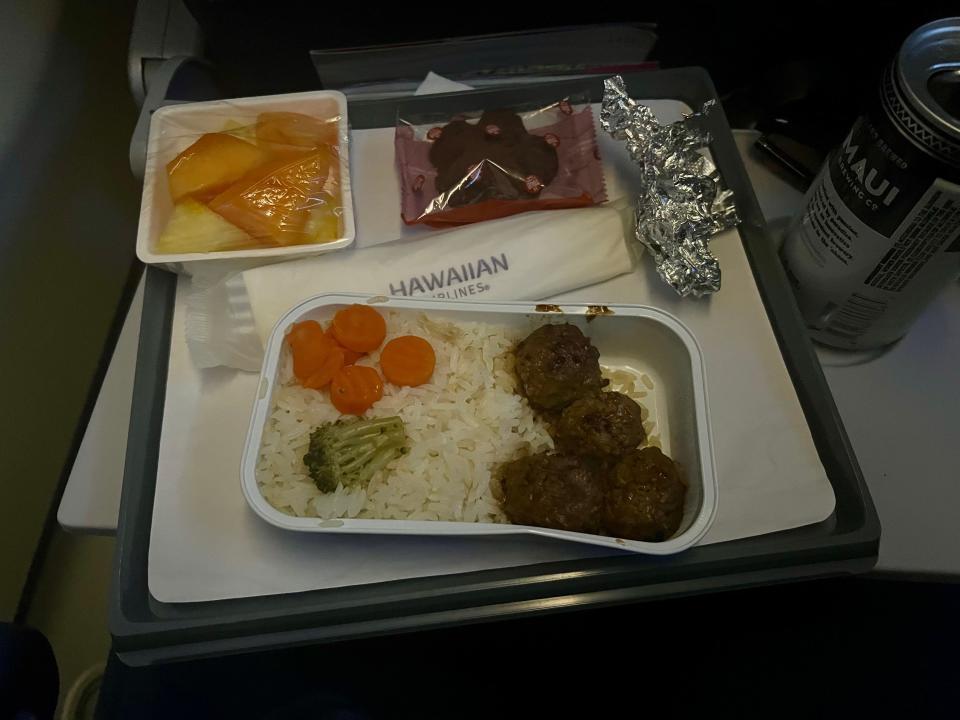
Once again, the meal looked questionable but was surprisingly flavorful and filling.
As this was a red-eye flight, the second meal contained mostly breakfast food, including a muffin, orange, cheese, and crackers.

This was probably the least impressive meal of the bunch, but the orange and muffin were both fresh.
And, again, I liked the little bag in which it was served.
Overall, I think Hawaiian provided a great start to my honeymoon, and I'd easily book the airline again in the future.

While the TV screens' lack of adjustability was annoying, the seats onboard Hawaiian were comfortable, and the recline provided a good position for sleeping.
And the food was excellent. I'd easily choose Hawaiian on future long-haul trips to Honolulu over competitors such as Delta and United simply for its better meals, as the seats and entertainment are comparable otherwise.
But, remember that even though this is a domestic flight, it's longer than flying to Europe from New York — so board prepared.
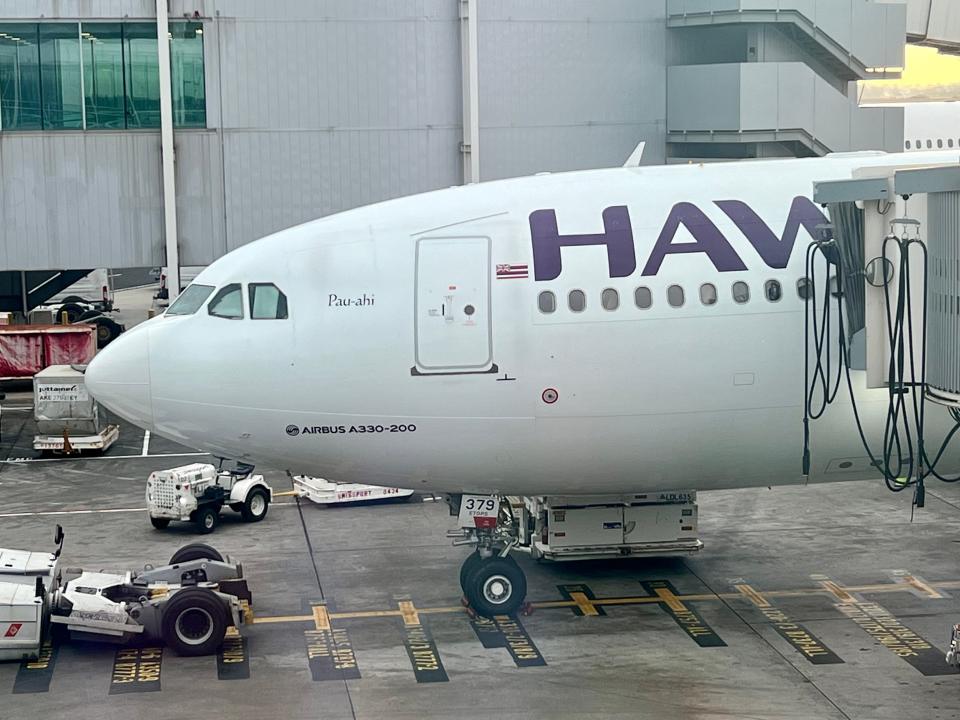
It's weird to think a domestic flight in the US is longer than some routes to Europe, but that's true of Hawaiian's New York to Honolulu nonstop. Its flight to and from Boston is actually even longer.
Nevertheless, that means travelers should prepare to sit for 10 hours, including bringing snacks in case airline food isn't to your taste, drinking plenty of water before and during the flight, and carrying sleep aids such as melatonin and an eye mask.
Read the original article on Business Insider


